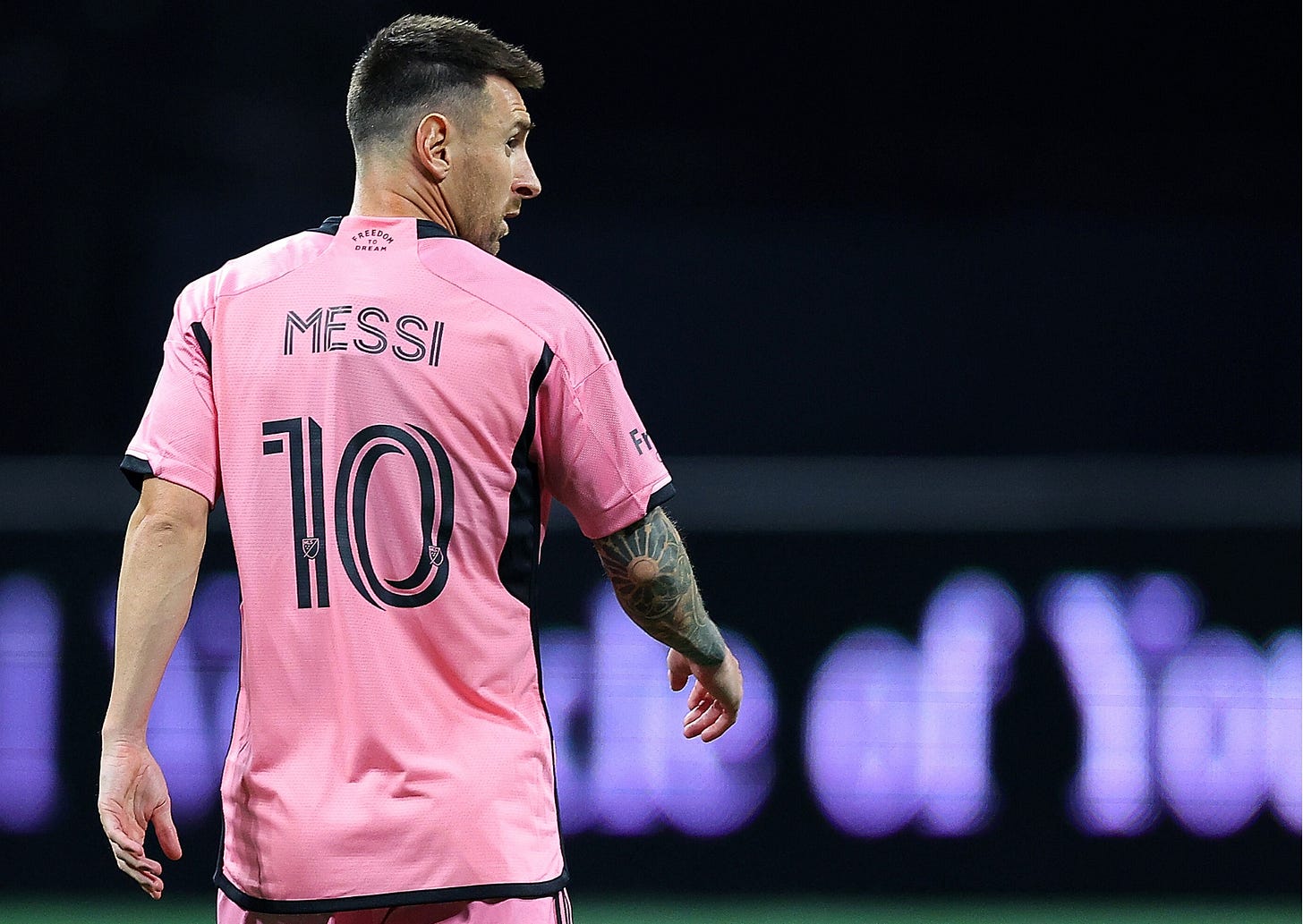Major League Soccer has arrived (with sky-rocketing valuations and increased profitability)
Lionel Messi gets all the buzz, but MLS has quietly built a really nice business over the last decade, now challenging the NHL as America's 4th most-popular sports league.
Stop me if you’ve heard this before: Major League Soccer will be the next major U.S. professional sports league. Well, that time has arrived. After decades of financial projections and capital calls, Major League Soccer and its 30 teams officially kicked off the league’s 30th (and one of its most important seasons ever) this past weekend.
Lionel Messi’s decision to join MLS in 2023 gets all the headlines, rightfully so. His Inter Miami squad now leads the league with $190 million in annual revenue, and the David Beckham-owned club went from a $600 million valuation before Messi’s arrival to being valued at $1.2 billion today — second only to Los Angeles FC at $1.28 billion.
2023: $55 million
2024: $190 million (+245%)
2023: $600 million
2025: $1.2 billion (+100%)
Similar to the impact his boss had on the LA Galaxy in the late 2000s, Messi has been Inter Miami’s golden goose. Miami’s ownership group spent years trying to convince the eight-time Ballon d’Or winner to join their club, eventually putting together one of the most unique contracts in sports history to land one of the sport’s all-time greats.
Inter Miami offered Messi the largest contract in MLS history at $20 million-plus annually and an option to purchase equity in the club. However, the deal wouldn’t have been possible without a group effort. The league’s streaming partner, Apple TV, is giving Messi a revenue share from all new MLS Season Pass subscribers and Adidas even writes a profit-sharing check to Messi each year based on his MLS jersey sales.
Inter Miami knows Messi will only be in town for a few years, so they have gotten aggressive in maximizing the return on investment. This includes smaller things, like making the team more competitive by signing some of his former FC Barcelona teammates. But it also includes larger things, like signing a new stadium sponsorship deal with JP Morgan Chase and a preseason tour last year with stops in El Salvador, Dallas, Saudi Arabia, Hong Kong, and Japan, covering 23,000 miles in just three weeks.
Inter Miami isn’t the only MLS club benefitting from Messi’s arrival. The Chicago Fire, for instance, sold out Soldier Field — yes, where the Chicago Bears play — for their match against Inter Miami in 2023. Messi didn’t even play because of an injury, but that one game still generated about 55% of the Fire’s ticket revenue for the season.



